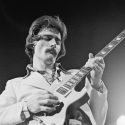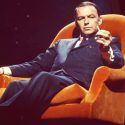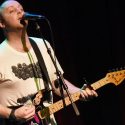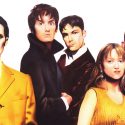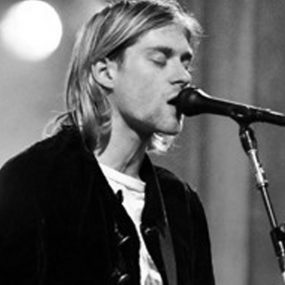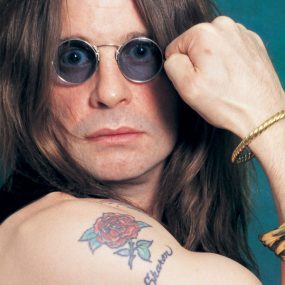Popkultur
John Lennon Solo in 20 Songs

Scroll to the bottom to view more handpicked playlists or read on to discover John Lennon‘s catalogue!
Click here to view or subscribe to the playlist in Spotify
John met Paul for the first time at a garden fete at Woolton Parish Church, Liverpool, on 6 July 1957. John’s band, The Quarrymen, named after nearby, Quarrybank School, were playing skiffle, as did just about every beat group that came along in the 1960s when they started out. From skiffle, John and Paul, joined by George, progressed to playing covers of American rock ‘n’ roll records. The rest is history.
The same week in July 1957, Little Richard’s ‘Lucille’ was in the British charts; it was the seventh record that the singer from Macon, Georgia had placed on the UK charts in just six months. The first Richard’s hits was, ‘Rip it Up’ in December 1956 and the b-side was ‘Ready Teddy’ and so when John came to record his Rock ‘n’ Roll album he covered both songs in a medley. John met Little Richard at the Star Club when the Beatles played in Hamburg, during which time they played both songs during their gigs.
Fats Domino’s ‘Ain’t That A Shame’, became the New Orleans pianist’s third hit in Britain in early 1957. These records, and the others featured on Rock ‘n’ Roll was the music that John grew up on, the music that stayed with him for the rest of his life, just like most people from his generation.
John’s first solo single was the anthemic, ‘Give Peace a Chance’ recorded in Montreal on 1 June 1969 during John and Yoko’s second bed-in for peace. Singer, Petula Clark was in Montreal at the same time playing concerts and she spoke to John on the phone one day and he invited her over to his and Yoko’s hotel, which is why she is one of the backing ‘singers’ on the record that made No. 14 on the Billboard Hot 100 and No.2 on the British singles chart. Aside from its chart success ‘Give Peace a Chance’ became the American anti-war movement’s theme song that was sung at countless rallies, as it has been ever since, all over the world. Some records are more important than just simply calling them, a ‘pop-song’.
‘Instant Karma’ was recorded on 27 January at Abbey Road and released a little over a week later in the UK, and two weeks after that in America. It was credited to Lennon/Ono with the Plastic Ono Band and has the distinction of being the first Beatles’ solo record to sell a million. With the song’s “We All Shine On” chorus, this Phil Spector produced single is another that has an anthemic quality to it, which helped propel this record to No.5 on the UK singles chart and top 3 in America.
John’s debut solo album, John Lennon/Plastic Ono Band was recorded over a month long period from the end of September 1970 at Abbey Road. ‘Working Class Hero’ is typical of many of the songs on the album in its honesty and openness. John’s lyric, “A working class hero is something to be”, rings true of his own situation, brought home by the fact he was now living at Tittenhurst Park, a Georgian Country House surrounded by 72 acres. It’s a song that has resonated with many in the intervening years having been covered by David Bowie, Roger Taylor, Elbow and Ozzy Osbourne among many others.
John was never afraid of to be outspoken; just think of the controversy when he told an interviewer that, “We’re more popular than Jesus now.” John’s words have often been misquoted and twisted, but his point was a serious one, just as it is in ‘God’ that was also included on, John Lennon/Plastic Ono Band. It’s a song that doesn’t limit itself to Jesus this time; John cited Buddha, Elvis, Dylan and Gita among the other idols he had no belief in. It’s also a song about the break up of the Beatles, and their position as ‘God’ to some people – “If there is a God, we’re all it.” More controversy followed its release, but in 1988 U2 came up with ‘God Part II’ as a kind-of sequel on their Rattle and Hum album
We all know that there is beauty in simplicity, it’s really quite simple, and there are few more beautiful songs than ‘Imagine’, the title track from John’s 1971 album. It’s been used countless times to accompany film footage of war and outrage, yet it never ceases to have the same affect – it reduces many of us to tears. ‘Jealous Guy’, also from the Imagine album has its origins in a visit to India when the Beatles visited the Maharishi at Rishikesh. In it’s original form, with different lyrics, it almost made the final cut for the Beatles’ White Album. Perhaps some people think this was a John Lennon single, and it was, but only 5 years after his death in 1980; Roxy Music, who took it to No.1 in the UK charts in 1981, also covered it.
John and Yoko moved to New York in September 1971 and the album, Some Time in New York City started to be recorded in December 1971 and was completed in the following March. The move, and the people John met in the city inspired ‘New York City’, but it was also against the backdrop of the US Government trying to deport him. “If the man wants to shove us out. We gonna jump and shout. The Statue of Liberty said, ‘come!’” was John’s response.
John and Yoko’s ‘Happy Christmas (War is Over)’ recorded with the Harlem Community Choir came out in America at Christmas time 1971 and a year later in the UK. The couple’s concerns with global issues and in particular peace are evident throughout John’s solo work and his recordings with Yoko. In this beautiful song John’s hopes for a world where social unity and change could come through personal accountability now seem so obvious to us all, but then it still had something of a revolutionary feel to it all.
John’s fourth solo album recorded at the Record Plant in New York during the summer of 1973 was released in November of the same year. ‘Mind Games’, the albums title track was originally started during the sessions for the Beatles’ Let It Be album when it was called ‘Make Love, Not War’. The lyrics that advocate love and peace also include, “Yes is the answer”, a reference to Yoko’s art that was what originally brought the couple together. ‘Out of The Blue’ is from the same album and is a reference to John and Yoko becoming a couple and she appearing as the lyric suggests. It is one of John’s most beautiful ballads.
A year after Mind Games came, Walls and Bridges and the lead single from the record is ‘Whatever Gets you Through the Night’ that has the distinction of being John’s first single to top the American Hot 100 (bizarrely it only made No.36 in the UK); it was the only single to do so during his lifetime. It features Elton John on harmony vocals and piano and during its recording Elton bet John that it would be a No.1. John agreed to appear on stage with Elton if it ever did and after it made the top of the charts he kept his promise at Madison Square Garden on 28 November 1974; it would be John Lennon’s last major concert appearance.
‘#9 Dream’ was the second single to come from Walls and Bridges and it is for many fans one of the most imaginative records that John ever recorded. Its chorus is haunting and the use of cellos gives it the feel of some of George Martin’s arrangements for the Beatles. During 1974 John produced Harry Nilsson’s Pussy Cats album and ‘The Old Dirt Road’ was co-written during this period by the two men who had been friends since London in the 1960s. At the press conference in 1968 to announce the formation of Apple Corps, John when asked to name his favourite American artist, replied, “Nilsson”. ‘The Old Dirt Road’ polarizes opinion, but it is another example, if any more were needed, that John’s innate sense of song remained key to everything he did.
Double Fantasy was the final album to be released during John’s lifetime, just three weeks before his murder. In 1981 Double Fantasy won the Grammy as, ‘Album of the Year’. The lead single for the album, ‘(Just like) Starting Over’ was released at the end of October and reached No.1 in the USA and the UK in the wake of the tragedy. Picking this as the first single from Double Fantasy was so appropriate, not least because this was John’s first release since 1975 and the Rock ‘N’ Roll album.
‘Woman’, John’s ode to Yoko, and all women, came out a month after his murder and according to John on an interview for Rolling Stone on 5 December, 3 days before he was killed, “The song reminds me of a Beatles track, but I wasn’t trying to make it sound like that. I did it as I did ‘Girl’ many years ago. So this is the grown-up version of ‘Girl.’” As a counterpoint, ‘Beautiful Boy (Darling Boy)’ is a love song to John and Yoko’s son, Sean who was born in 1975. He was one of the principal reasons John retreated from the record business so he could spend more time with his son in these formative years. When Paul McCartney appeared on the BBC’s Desert Island Discs in 1982 he decided that if he could only take one record to the mythical island then this would be it.
In 1984 Milk and Honey, John and Yoko’s projected follow-up to Double Fantasy, finally came out; Yoko was unable to resume work on it to complete it for three years in the aftermath of John’s death. ‘Nobody Told Me’, was originally intended for Ringo Starr’s 1981 Stop and Smell the Roses, album and when it was released as a single it became a hit in many countries, including a top 5 in the US and No.6 in Britain.
‘Grow Old with Me’ is one of the last songs ever written by John and was recorded as a demo while he was on holiday in Bermuda in 1980. It was inspired by a poem of Robert Browning’s entitled “Rabbi Ben Ezra” and a song by Yoko called ‘Let Me Count the Ways’ (which in turn had been inspired from a poem by Elizabeth Barrett Browning).
There is no more beautiful way to end this brief musical autobiography of John Lennon. We will never see his like again. ‘In His Own Write’, John’s book of poetry, published in 1964, somehow seems to encapsulate with its title, everything that made John what he was. He was his own man; never afraid to say or write what he felt and never one to court the establishment, wherever he was living or working.
John’s solo recordings and those with Yoko sound as fresh and as innovative today as they did when they first came out, many of them over 40 years ago. It’s time to listen once again to this wonderful music, and in so doing, you will find that more than many performers, John’s writing was autobiographical… it is what makes it so vital.
FURTHER LISTENING:
Visit the dedicated John Lennon artist page here or use the players below to listen to our playlists in your chosen streaming service. You can also click the links underneath to view the playlists directly in the Spotify app.
Essential John Lennon – Nothing but the very best tracks!
Click here to view or subscribe to the Essential playlist in Spotify
Digging Deeper – Selected highlights of lesser known tracks from across the catalogue:
Click here to view or subscribe to the Digging Deeper playlist in Spotify
Complete – Everything in one playlist!
Click here to view or subscribe to the Complete playlist in Spotify









